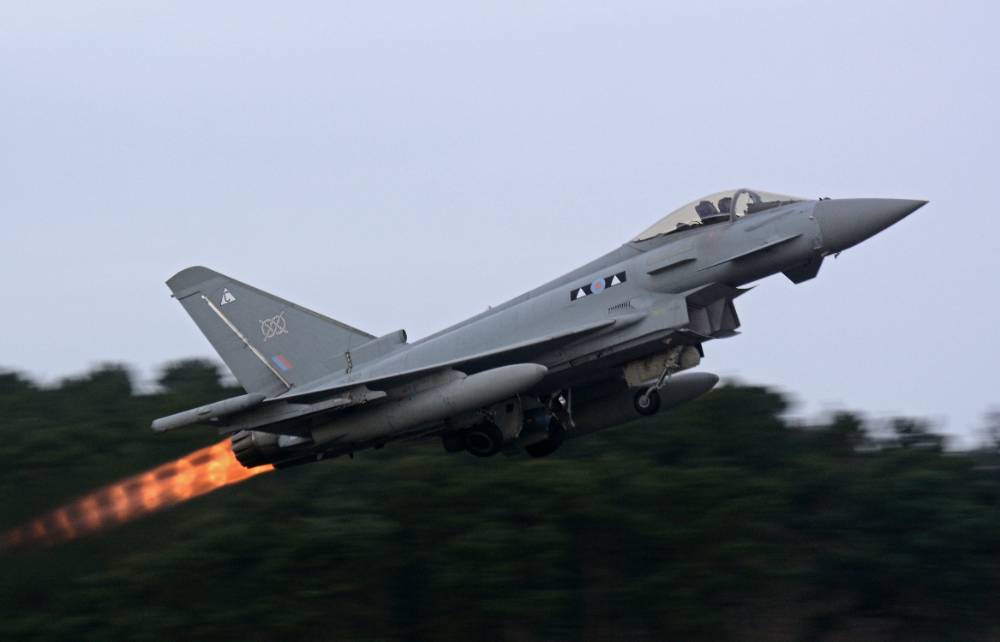
Courtesy of Niall Pattinson
THE EARLY YEARS
No II(AC) Sqn was formed, as No 2 Sqn RFC, at Farnborough on 13th May 1912. Its initial equipment consisted of Bristol Boxkites, Breguet Biplanes, BE1s, Longhorns, BE2s, BE2as, and Henry Farman Biplanes. On 26th February 1913 the squadron moved to Montrose with the BE2as which were soon joined by some BE2s. In April 1914 some Shorthorns were received and it was with this complement that the squadron embarked for France on 13th August 1914.
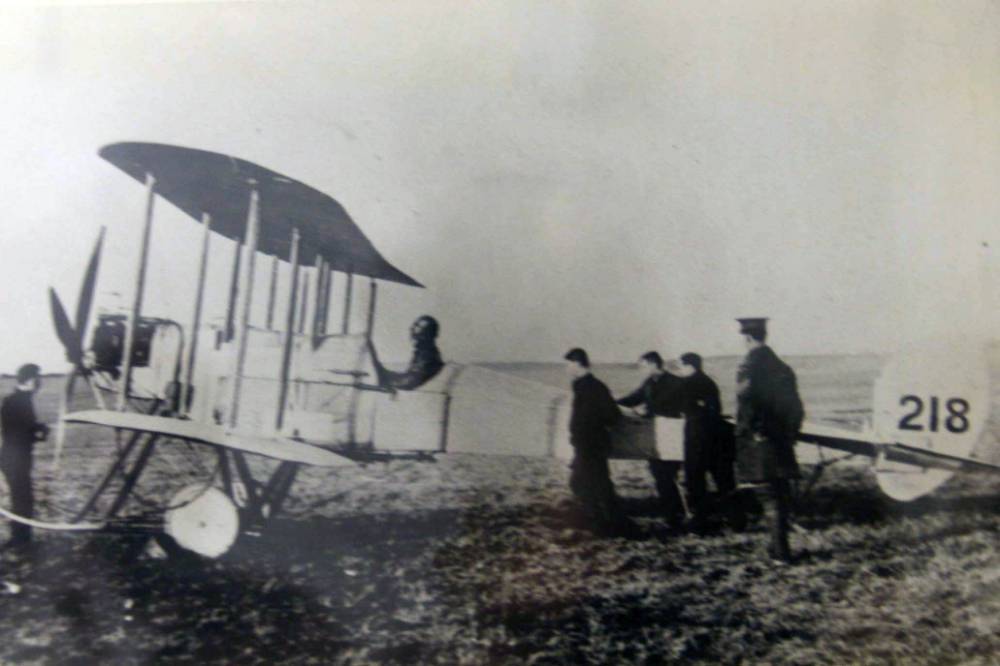
BE2 218 Crown Copyright
On 3rd August 1914 Lt Harvey-Kelly in BE2a 347 was the first RFC pilot to land in France. The authenticity of this shot is now questioned. Crown Copyright
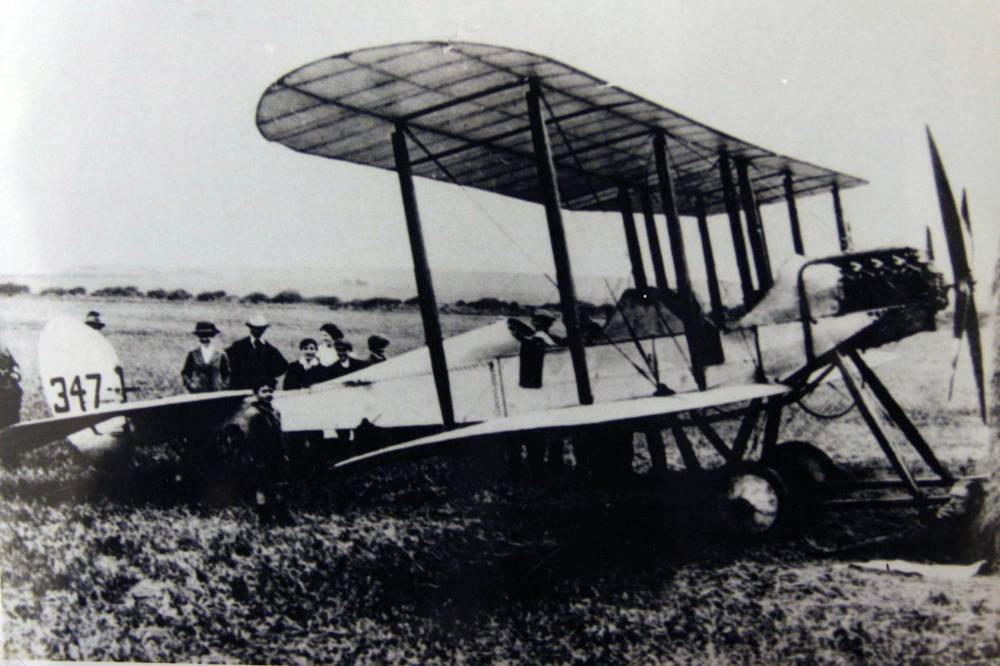
Crown Copyright
FIRST WORLD WAR
After three months of frequent moves the squadron settled at Merville in November 1914. This stay was to last until the end of June 1915 when it moved to Hesdigneul, which was to be its base for 3 years Although the Bristol Scout was operated during the first six months of this period, successive models of the BE2 were operated continuously until June 1917. In April 1917 the first AW FK8 was received and this type was to be operated for the remainder of the squadron’s first period of existence. The squadron relinquished its operational aircraft in February 1919 and was disbanded on 20th January 1920.
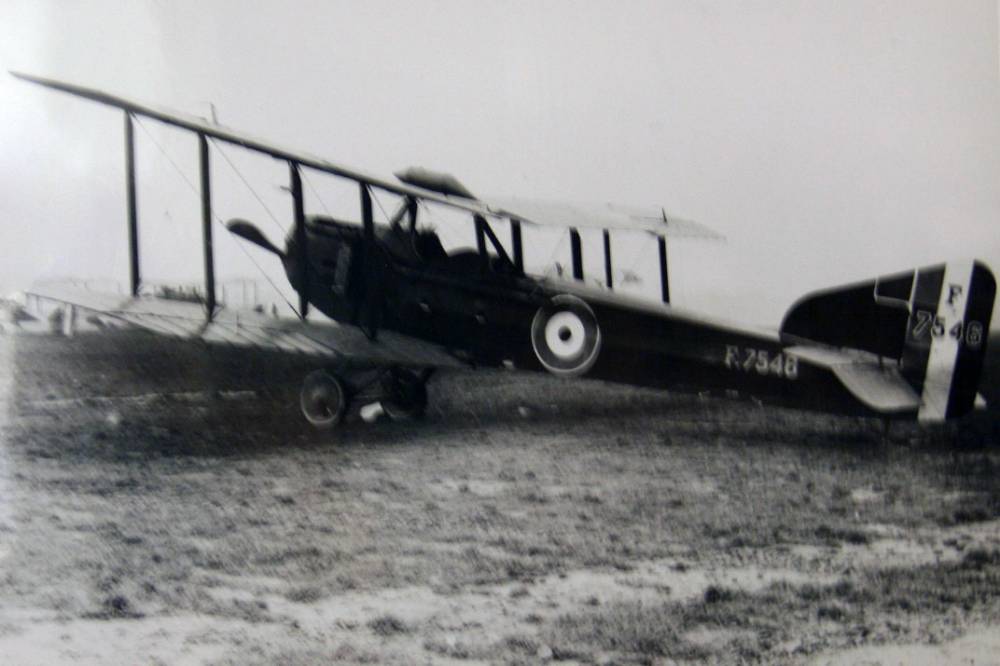
AW FK8 F7546 rown Copyright
INTER-WAR ARMY CO-OPERATION
This first disbandment was to be very short because on 1st February 1920 105 Squadron, based at Oranmore in Ireland, with the Bristol F2b, was renumbered. The squadron was to operate the F2b for the next 10 years; the first 2 years spent in Ireland, followed by 2 years at a variety of bases in England before settling at Manston in March 1924. One notable event during this period was a 3 month deployment to Shanghai Racecourse in 1927, travelling in each direction on HMS Hermes. The squadron was there as part of the Shanghai Defence Force sent to protect British citizens and interests threatened by the outbreak of fighting between Chinese nationalist and communist forces.
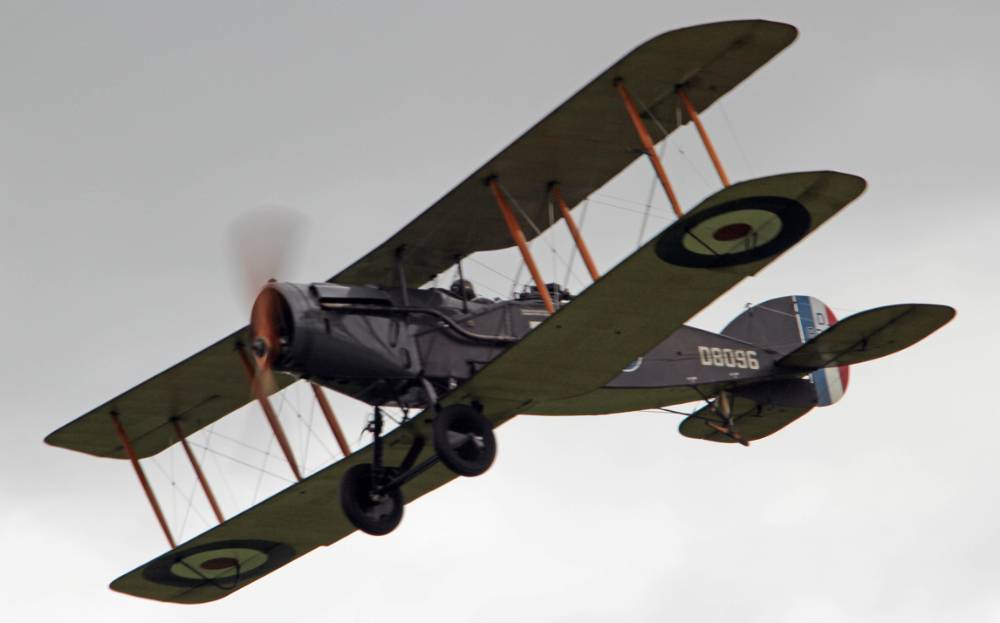
Bristol F2b similar to those flown by 2 Sqn John Bradshaw
In December 1929 the Atlas arrived to replace the F2b. The Atlas was in turn replaced by the Audax in May 1933. In November 1935 11 years at Manston ended with the short move to Hawkinge. The Audax was replaced by the Hector in November 1937, but in July 1938 it was in turn replaced by the Lysander I, the type with which the squadron was once again to go to war.
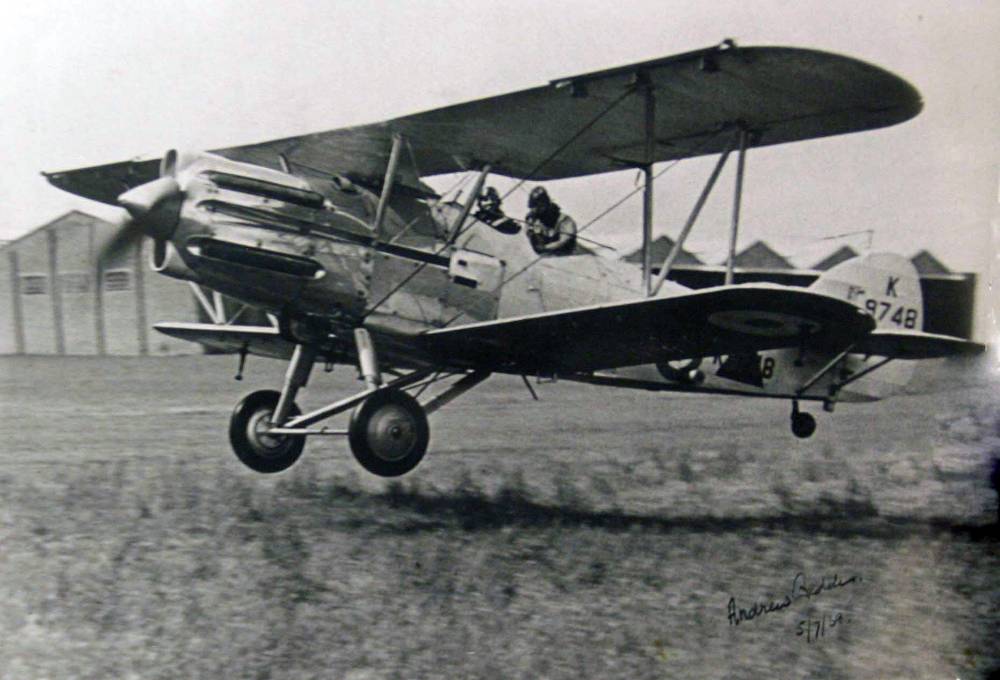
Hector K9748 1937 Crown Copyright
WORLD WAR II
In late September 1939 the squadron left Hawkinge for France, once again an early element of a British Expeditionary Force. The squadron’s Lysander Is, replaced in turn by the MkII and MkIII, operated from a variety of French bases until withdrawn to Bekesbourne, Kent on 20 May 1940. It was there to provide cover for Operation Dynamo, the evacuation of the BEF from Dunkirk. Following the completion of Op Dynamo the squadron moved to Hatfield at the start of 4 years rotating among bases in Eastern England, the principle one being Sawbridgeworth where it was based for a total of over 18 months.
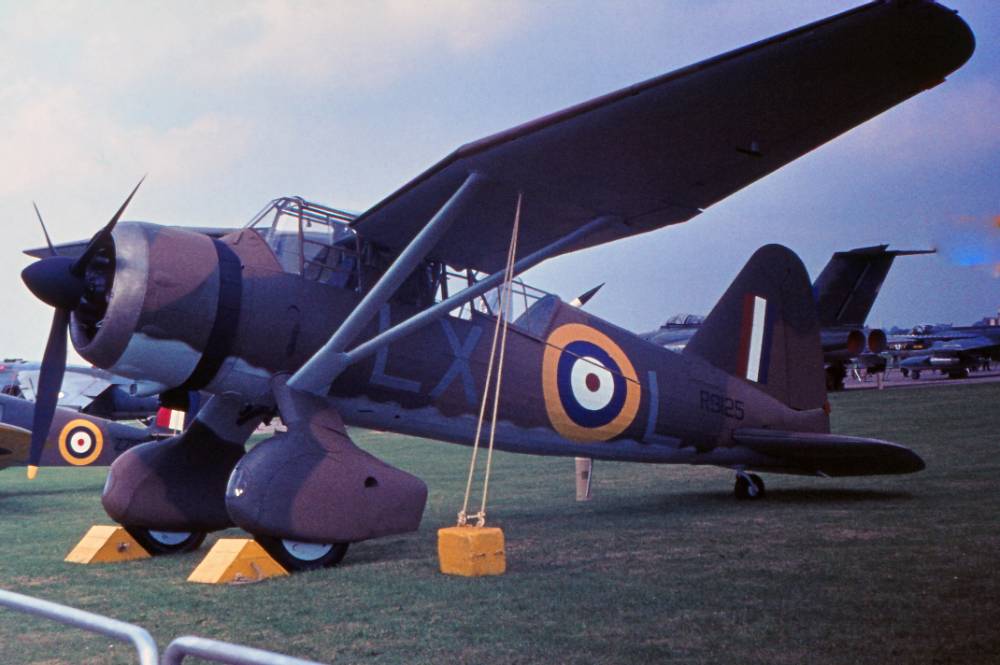
Lysander R9125 similar to those flown by 2 Sqn Abingdon 15 June 1968
In August 1941 the Lysander was replaced by the Tomahawk I and II which were replaced in turn by the Mustang I in April 1942.
Successive models of Allison-engined Mustangs were to remain the squadron’s mount for the next 2½ years. The squadron returned to France on 29th July 1944 as part of the 2nd Tactical Air Force. Multiple changes of base occurred as the squadron followed the allied advance through France and Belgium into the southern Netherlands. In November 1944, at Gilze-Rijen, the squadron received the Spitfire FRXIVe, a type it would retain into the jet age. Shortly after VE Day the squadron arrived in Germany at the start of a 46 year stay.
COLD WAR RECONNAISSANCE
Now firmly established in the reconnaissance role, the squadron’s initial post-war base was Celle where the Spitfire FRIVe was joined by the unarmed PR11. This was replaced early in 1946 by the definitive reconnaissance version the PRXIX.
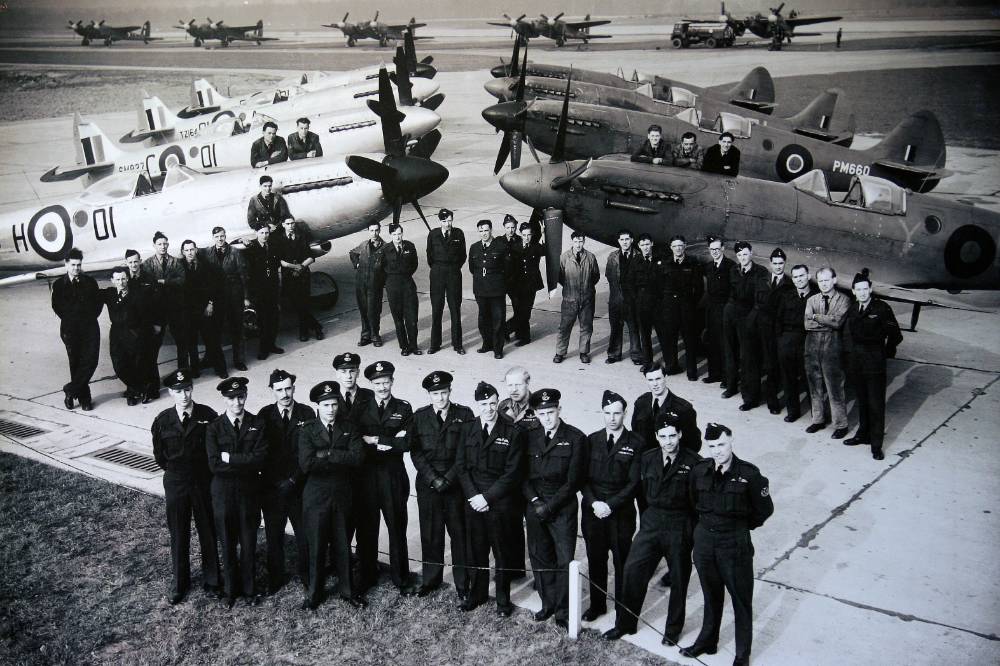
Spitfire FRXIV and PRXIX RAFG Crown Copyright
In early 1951 the Spitfires FRXIVe was replaced by the Meteor FR9, for a short period supplemented by PR10s. In June 1951 the last Spitfire PRXIXs were retired and the squadron standardised on the Meteor FR9 for the next 5 years. Then for 5 years, starting in February 1956, the squadron operated the Swift FR5, mainly from Jever.
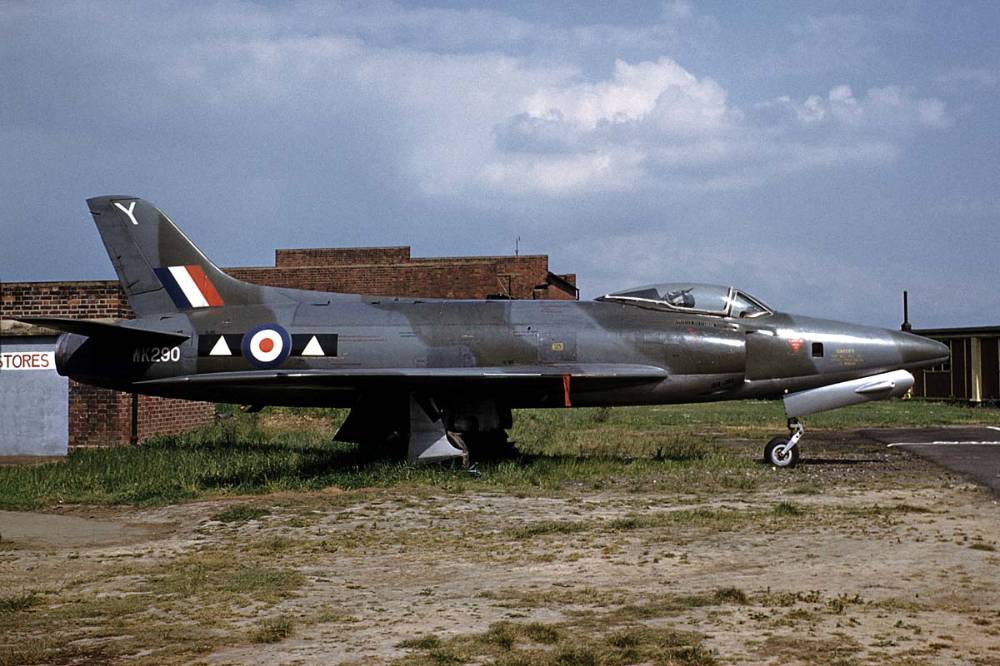
Swift FR5 WK290 Y 2 Sqn Church Fenton May 1961
Although the Swift proved to be a competent tactical reconnaissance platform, it was replaced in March 1961 by the Hunter FR10. The squadron operated the Hunter from Gutersloh for 10 years.
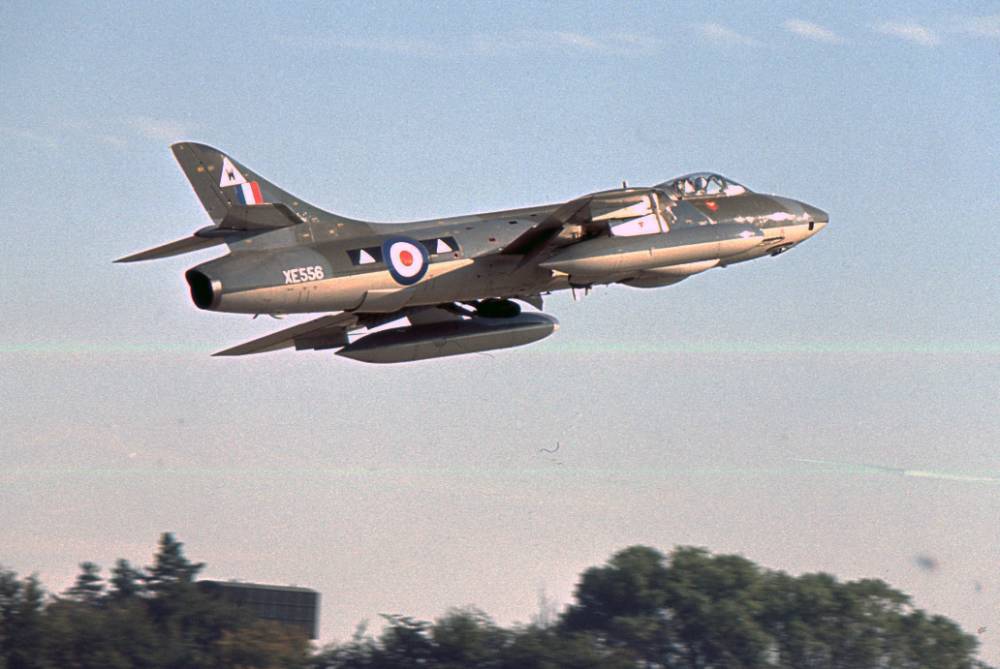
Hunter FR10 XE556 Biggin Hill Courtesy of Ashly Annis
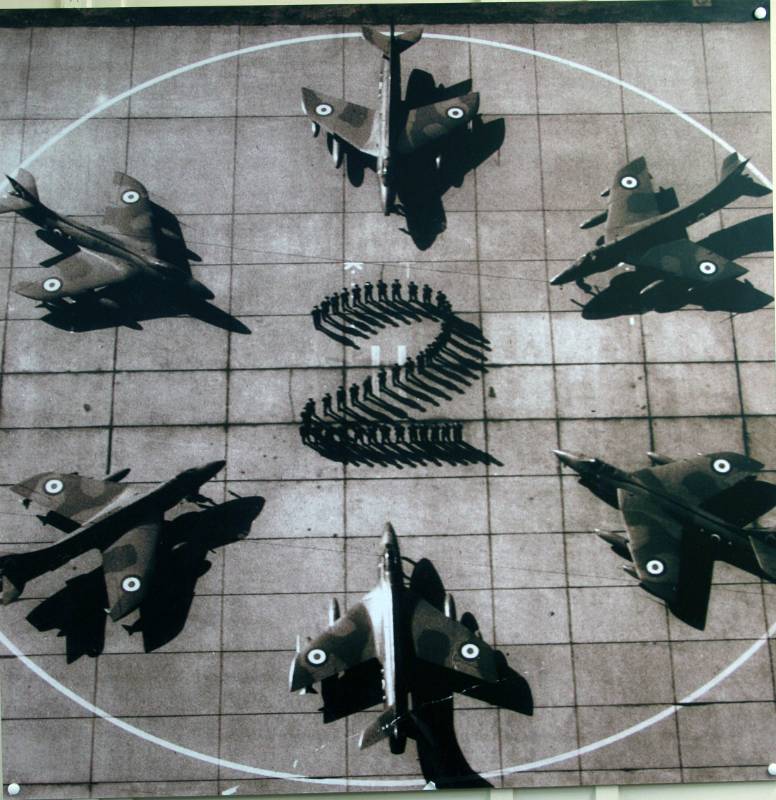
Hunter FR10s Crown Copyright
In December 1970 a Phantom FGR2 squadron was formed at Bruggen that was to deploy to Laarbruch in May 1971 to replace the Hunters.
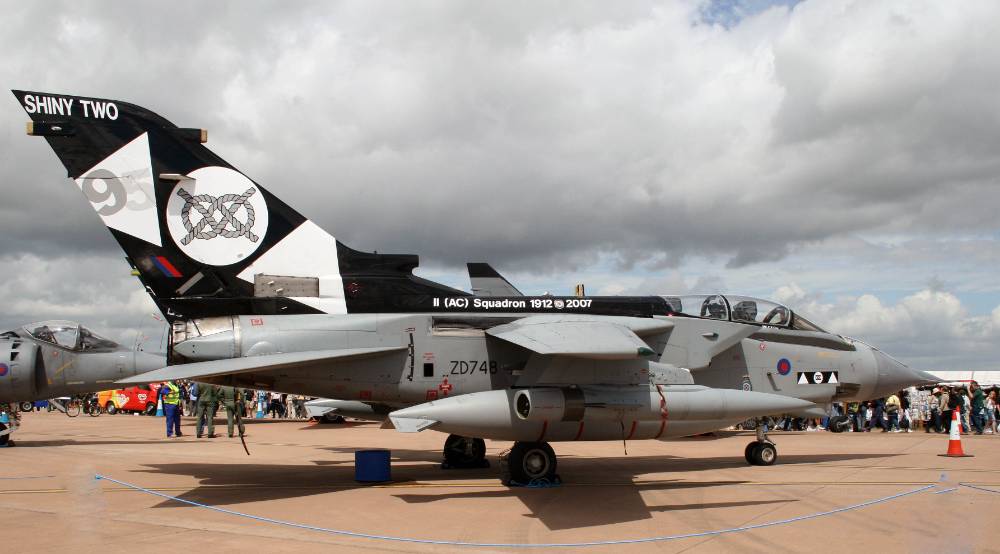
Tornado GR4 ZD748 Courtesy of John Bradshaw
The squadron’s last operational commitments with Tornados was to Operation Herrick, support to the allied operations in Afghanistan.
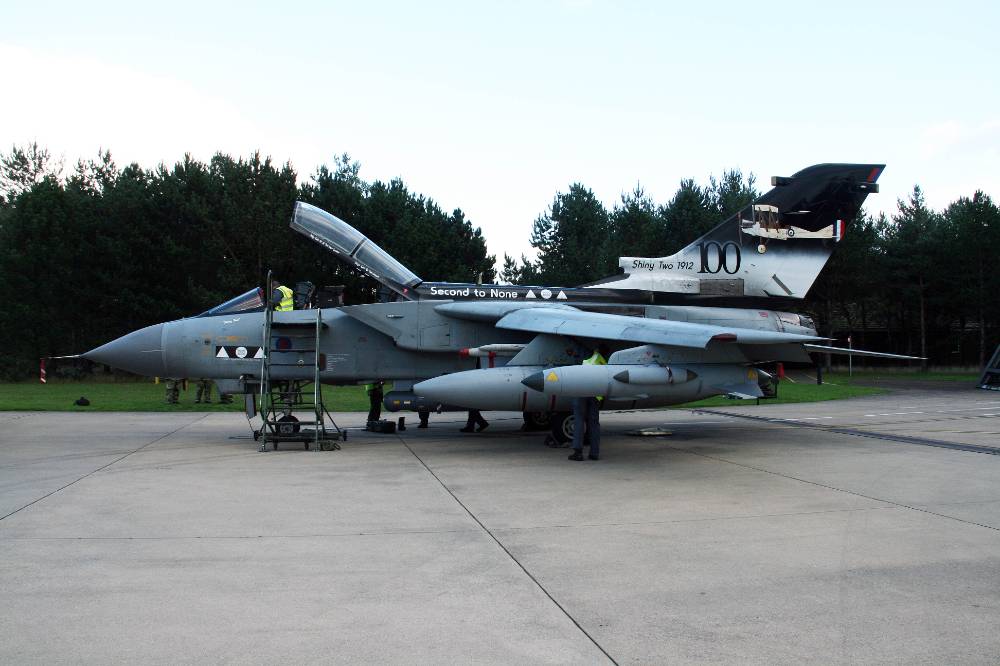
Tornado GR4A ZA398 2 Sqn 100th Anniversary Scheme Marham Courtesy of John Bradshaw
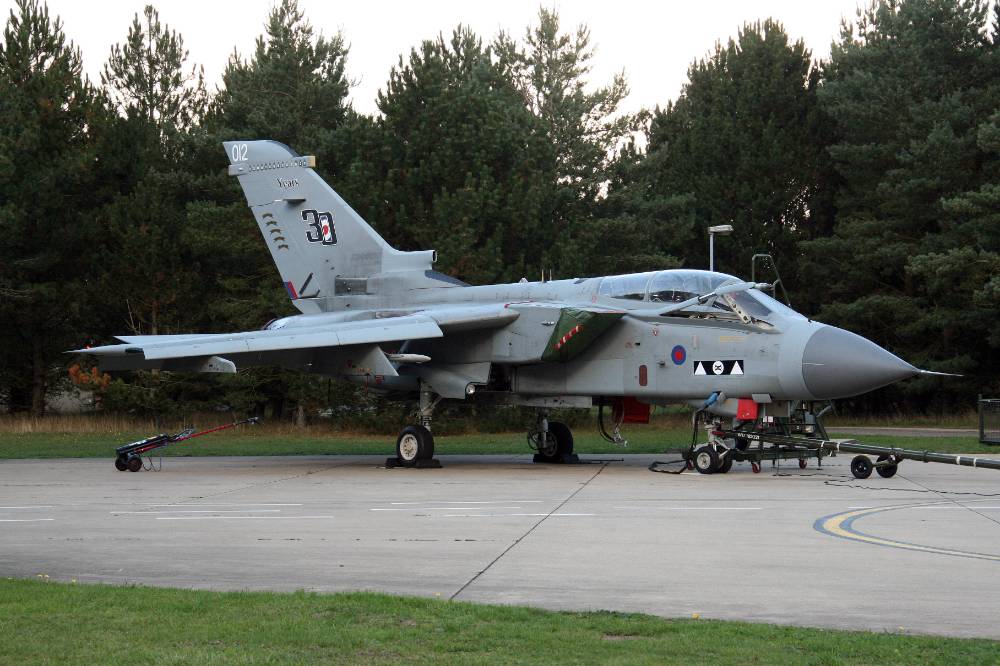
Tornado GR4A ZA401 2 Sqn 30th Anniversary of Tornado Scheme Courtesy of John Bradshaw
THE FUTURE
Twenty six years of Tornado operation came to an end on 9th January 2015 when the squadron stood down at Marham and on the same day stood up at Lossiemouth with the Typhoon GR4.
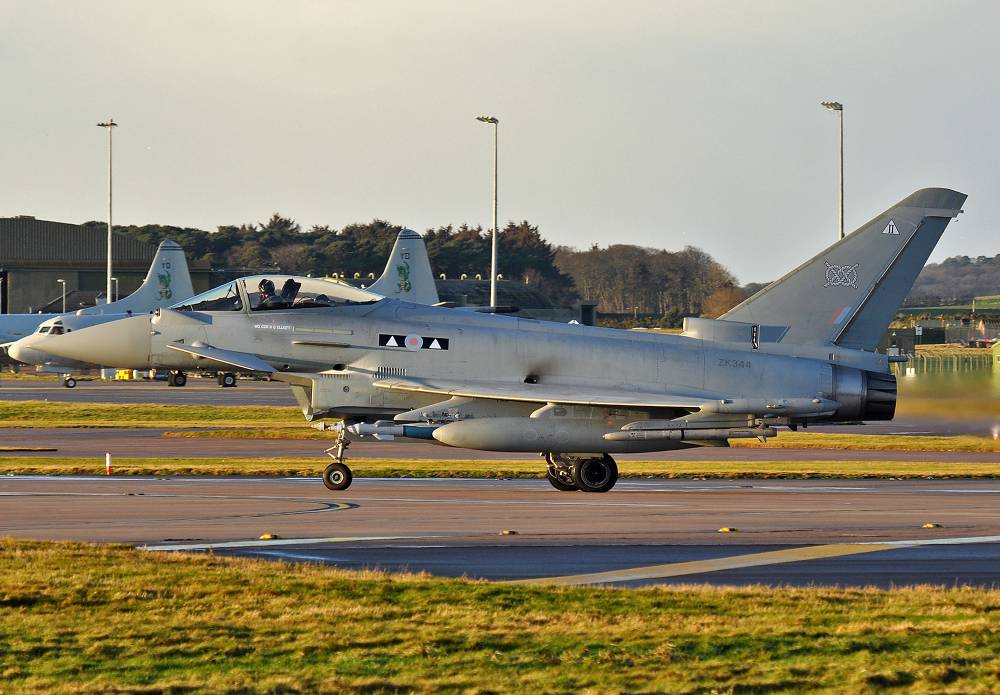
Typhoon FGR4 ZK344 January 2015 Niall Paterson